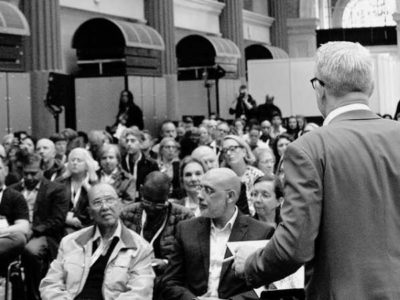- Over both the most recent quarter and the year, the unemployment rate has risen, the employment rate has fallen and economic inactivity has increased.
- Redundancies climbed to 3.9 per thousand and vacancies fell for the 21st consecutive time.
- If pay growth carries on at its current pace, wages will be up 4.8% in a year.
- What this means for rates.
- What this means for your finances.
The ONS has released employment and wage data covering the year to December-February: Employment in the UK – Office for National Statistics (ons.gov.uk)
Susannah Streeter, head of money and markets, Hargreaves Lansdown:
What this means for rates
”Average wage growth is still obstinately high, with growth slowing more gradually than expected. It’s likely to make the Bank of England that bit more reticent about cutting interest rates.
Average pay growth including bonuses stayed stubbornly at 5.6% between December and February, and only dropped slightly to 6% from 6.1% if you strip out bonuses. Even though headline inflation is on track to hit its target in the next few months, policymakers are concerned that persistently high pay might cause it to pop back up, and this snapshot does very little to alleviate those fears.
Unemployment may have jumped up, but the unreliability of the data gathering will mean less credence may be given to this appearance of a potential drag on wages to come. With vacancies still high and above pre-pandemic levels, particularly in the competitive services industry, the pressure to lure workers in with better deals is likely to stay. This snapshot means there is a greater chance interest rate cuts may come a bit later in the summer, with August now looking increasingly likely, however a lot can happen in the next few months and June still can’t be ruled out.”
Sarah Coles, head of personal finance, Hargreaves Lansdown:
What this means for your finances
“From a personal perspective we can draw some comfort from the fact wages are rising faster than inflation, but we can’t ignore the fact that the overall employment picture is deteriorating. Over the previous quarter, and the past year, unemployment, redundancy and inactivity rates rose, while employment and vacancies dropped. These aren’t huge movements, but they’re all in the wrong direction.
Wages
In isolation, wage rises paint an optimistic picture, and as inflation has fallen, pay has moved further ahead. We saw a large chunk of these rises several months ago, so if wages keep increasing at the same pace as the past few months, they’ll be closer to annual rises of 4.8%. However, this is still faster than inflation and making up some of the acres of ground lost over the past couple of years.
For those who are in work, this bodes well. As gaps open up in our finances, it’s vital to start considering rebuilding some of the resilience we have lost in recent years. This includes emergency savings. You should aim for cash to cover 3-6 months’ worth of essential expenses in an easy access savings account or cash ISA. If that seems like an impossible challenge, just do whatever you can afford – having something is always better than nothing. If you have paused pension or SIPP contributions, now is the time to re-start them, and use a pension calculator to see what you can do to rebuild.
More alarmingly, labour market weakness appears to be bedding in. Economists call this a loosening of the labour market, and while we’re along way from facing a baggy future, the days where the labour market was tighter than a pair of jeans on a big night out seem to be drawing to a close. The Office for Budget Responsibility has been predicting a rise in unemployment, and this seems to be materialising. If this comes to pass, your emergency savings could be even more of a lifeline.”
Other figures from the release
- Before inflation, wages in December-February were up 6% in a year excluding bonuses and 5.6% with them.
- After inflation, wages rose 1.6% including bonuses and 1.9% excluding them. This has risen as inflation has fallen. Both were last higher in autumn 2021.
- Pay growth for the private sector was 6%. For the public sector it was 6.1%.
- The unemployment rate was 4.2%, up over the year and over the quarter – driven by those unemployed by more than six months.
- The employment rate was 74.5%, down over the most recent quarter, and over the year. Full-time workers rose, but were dragged down overall by fewer part-timers.
- The economic inactivity rate was 22.2% – up on the quarter and over the year. This was largely due to a rise in students and the long-term sick.
- In December-February, redundancies were up by 0.6 per thousand on the quarter to 3.9 per thousand.
- The early estimate for payrolled employees in February fell 18,000 in a month but were up 352,000 in a year – to 30.3 million.
- Vacancies in January-March fell in the quarter to 916,000 – the 21st consecutive fall – the longest ever recorded. They’re still above pre-pandemic levels.





















Comments